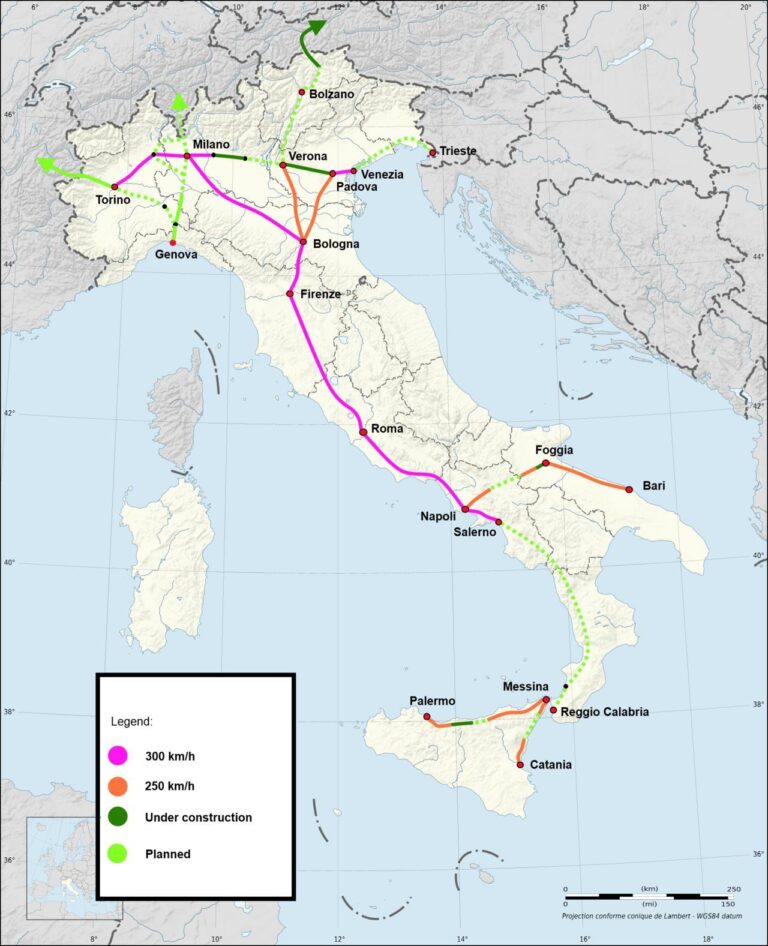Italy’s ambitious drive to liberalise its railway sector offers pivotal insights into the challenges and opportunities of opening up national rail networks to competition. In a recent letter to the Financial Times, industry experts highlight the broader implications of Italy’s experience, shedding light on what other countries can learn from its journey towards a more competitive and efficient rail system. This analysis comes as European nations increasingly consider reforms aimed at boosting service quality, innovation, and passenger choice in public transport.
Italy’s Railways Liberalisation Reveals Challenges in Market Competition
Italy’s ambitious effort to open its railways to competition has exposed several critical market dynamics, challenging the assumption that liberalisation automatically leads to better services and prices. While new entrants have broadened options for passengers, the incumbent operators continue to wield significant influence due to entrenched infrastructure control and longstanding brand loyalty. This imbalance has led to a fragmented market where benefits of competition are unevenly distributed across regions, reflecting disparities in investment and service quality.
Key obstacles persist, including regulatory complexities, limited access to vital rail infrastructure, and the need for stronger enforcement mechanisms to prevent anti-competitive behavior. The experience in Italy serves as a cautionary tale for other countries contemplating similar reforms, highlighting the necessity for:
- Transparent track access policies that foster genuine competition
- Coordinated timetable management to ensure efficient use of rail networks
- Robust oversight bodies empowered to address unfair practices
| Factor | Impact on Competition |
|---|---|
| Infrastructure Control | Limits new entrants’ operational freedom |
| Regulatory Oversight | Varied enforcement affects market fairness |
| Passenger Preferences | Strong loyalty to incumbents slows adoption |
Insights into Passenger Experience and Infrastructure Investment Post-Liberalisation
Since the liberalisation of Italy’s railways, passengers have experienced a mixed bag of improvements and challenges. On one hand, competition has driven some operators to enhance service quality, resulting in more punctual trains, modernized carriages, and improved onboard amenities. However, these benefits have been unevenly distributed across regions, with major urban routes seeing the bulk of investment while rural and less profitable lines struggle with reduced services and aging infrastructure. Customer satisfaction surveys reveal that expectations have risen, but so has frustration over inconsistent service coverage and ticket pricing complexity.
Investment patterns post-liberalisation further illustrate where priorities lie. A closer look at funding allocation shows a clear emphasis on upgrading high-speed corridors and major interchange hubs, often at the expense of local network maintenance. The table below highlights recent infrastructure spending by category, underscoring the imbalance:
| Category | Investment (€ million) | Focus Area |
|---|---|---|
| High-speed rail upgrades | 1,250 | Turin-Milan-Rome-Naples corridor |
| Regional line maintenance | 400 | Peripheral and rural routes |
| Station modernisation | 600 | Major urban stations |
| Rolling stock renewal | 750 | Fleet-wide upgrades |
While liberalisation has incentivized some modernization, the uneven attention to service equity and infrastructure investment raises questions about long-term sustainability. The success of Italy’s rail reforms may ultimately depend on balancing commercial competitiveness with a commitment to nationwide connectivity – ensuring that passengers across all regions receive both reliable service and tangible improvements.
Recommendations for Policy Makers to Foster Sustainable and Efficient Rail Services
Policy makers aiming to reap the benefits of rail liberalisation must prioritize frameworks that promote genuine competition without compromising service quality. This involves setting clear regulatory standards that enforce transparency, safety, and customer rights while allowing new entrants to challenge incumbents. Key strategies include:
- Designing fair access regimes to infrastructure that prevent monopolistic control
- Encouraging public-private partnerships that balance investment and operational efficiency
- Implementing performance monitoring systems to hold operators accountable
- Supporting innovation in rolling stock and digital ticketing platforms
A comparative glance reveals that countries with clear, robust regulatory institutions tend to foster more dynamic railway markets. The table below highlights fundamental policy elements that underpin sustainable rail service ecosystems:
| Policy Element | Impact | Example |
|---|---|---|
| Regulatory Independence | Ensures impartial oversight | UK Office of Rail & Road |
| Open Access Rights | Boosts competition | Italy’s Frecciarossa vs. Italo |
| Investment Incentives | Concluding Remarks
Italy’s experience with railway liberalisation offers valuable insights for policymakers and industry stakeholders across Europe. As competition reshapes the sector, the lessons learned underscore the importance of balanced regulation, investment in infrastructure, and the need to safeguard public service obligations. The evolving Italian model serves as a critical case study in navigating the complexities of opening a traditionally state-dominated industry to market forces, highlighting both the challenges and opportunities that come with such transformative change. |




